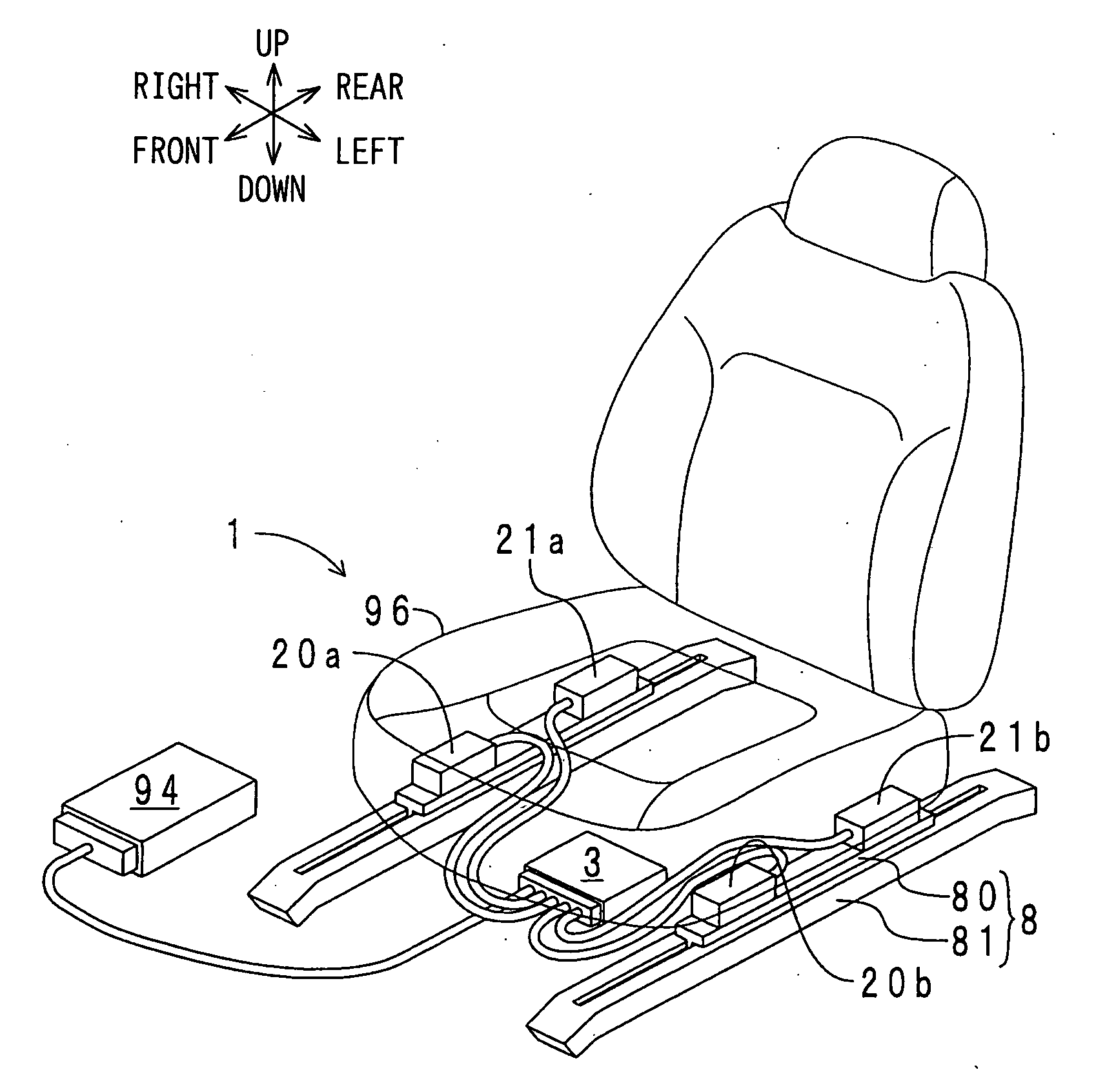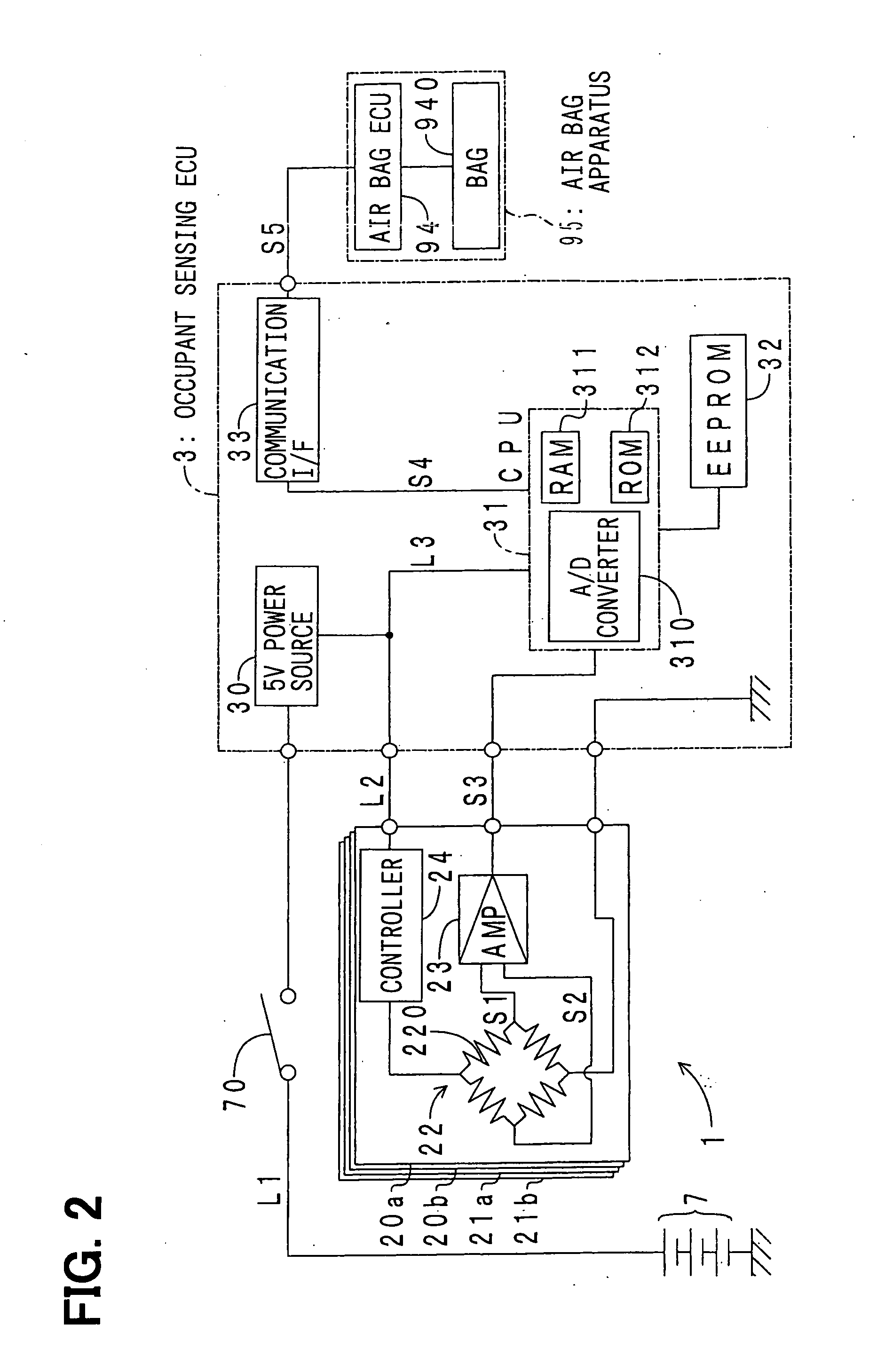Load sensing system for seat
- Summary
- Abstract
- Description
- Claims
- Application Information
AI Technical Summary
Benefits of technology
Problems solved by technology
Method used
Image
Examples
first embodiment
[0019] A load sensing system according to a first embodiment will be described with reference to FIGS. 1 to 5B. With reference to FIG. 1, in the load sensing system 1, two seat rail parts 8 are arranged parallel to each other in a transverse direction (a width direction) of a vehicle. Each seat rail part 8 includes an upper rail 80 and a lower rail 81. The lower rail 81 is secured to a floor (not shown) of a vehicle body. The upper rail 80 is slidable relative to the lower rail 81 in a fore-and-aft direction (a longitudinal direction) of the vehicle. A seat (a front passenger seat) 96 is slidable integrally with the upper rails 80 in the fore-and-aft direction. Two front sensors 20a, 20b and two rear sensors 21a, 21b are placed in a space between a seat frame (not shown) of the seat 96 and the upper rails 80. The front sensors 20a, 20b and the rear sensors 21a, 21b constitute the load sensing system 1 of the present embodiment. The front sensor 20a is vertically opposed to a right f...
second embodiment
[0037] A second embodiment is similar to the first embodiment except that the size of the entire load sensing range of each front sensor and the size of the entire load sensing range of each rear sensor are generally the same. Thus, the following description will be mainly focused on this difference.
[0038]FIG. 6 is a schematic diagram showing the load sensing range of each sensor of the load sensing system of the present embodiment. The components similar to those of FIG. 4 will be indicated by the same numerals. As shown in FIG. 6, the size of the entire load sensing range Ffs of each front sensor 20a, 20b is set to be generally the same as the size of the entire load sensing range Rfs of each rear sensor 21a, 21b. Furthermore, the size of the positive load sensing subrange F(+) of each front sensor 20a, 20b is set to be smaller than the size of the positive load sensing subrange F′(+) of each rear sensor 21a, 21b. Furthermore, the size of the negative load sensing range F′(−) of ...
PUM
 Login to view more
Login to view more Abstract
Description
Claims
Application Information
 Login to view more
Login to view more - R&D Engineer
- R&D Manager
- IP Professional
- Industry Leading Data Capabilities
- Powerful AI technology
- Patent DNA Extraction
Browse by: Latest US Patents, China's latest patents, Technical Efficacy Thesaurus, Application Domain, Technology Topic.
© 2024 PatSnap. All rights reserved.Legal|Privacy policy|Modern Slavery Act Transparency Statement|Sitemap



